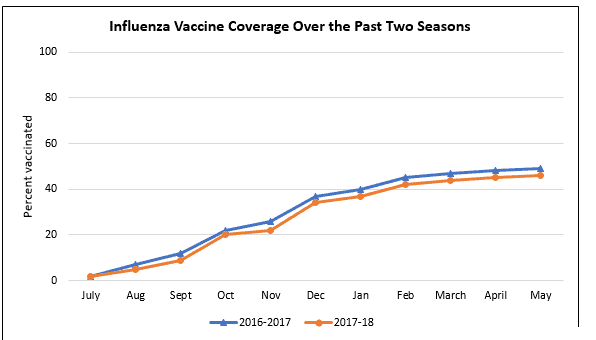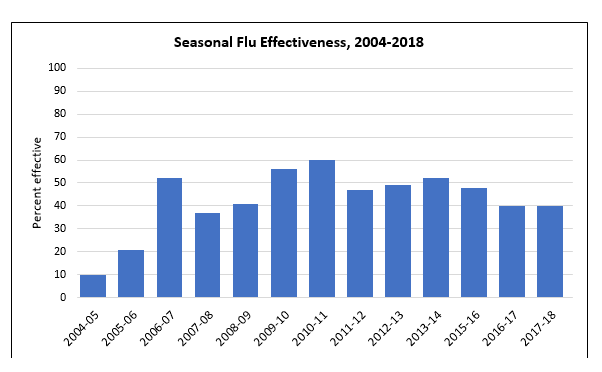Patients who heed your advice to get a flu shot and take common-sense measures to avoid spreading germs—regular, effective handwashing; cleaning common-use surfaces; staying home when they’re sick—are less likely to get the flu. That’s a given. What’s less clear in the midst of any flu season is how many of them do so (and at what point), and how effective the vaccine is for those who do receive it.
The Centers for Disease Control and Prevention has released retrospective data on each of those questions. As they say in the financial services advertisements, these results are no guarantee of future performance; however, the data do give us a good sense of how things have been trending. And when patients do present with the flu, in spite of your best efforts to prevent that, bear in mind the strategies laid out in this month’s cover article (Treating Patients Infected with Influenza Virus in the Urgent Care Setting, on page XX).
Adapted from: Estimates of influenza vaccination coverage among adults—United States, 2017–18 flu season. Available at: https://www.cdc.gov/flu/fluvaxview/coverage-1718estimates.htm. Accessed November 12, 2018.
Adapted from: Centers for Disease Control and Prevention. Seasonal influenza vaccine effectiveness, 2014–2018. Available at: https://www.cdc.gov/flu/professionals/vaccination/effectiveness-studies.htm. Accessed November 12, 2018.


